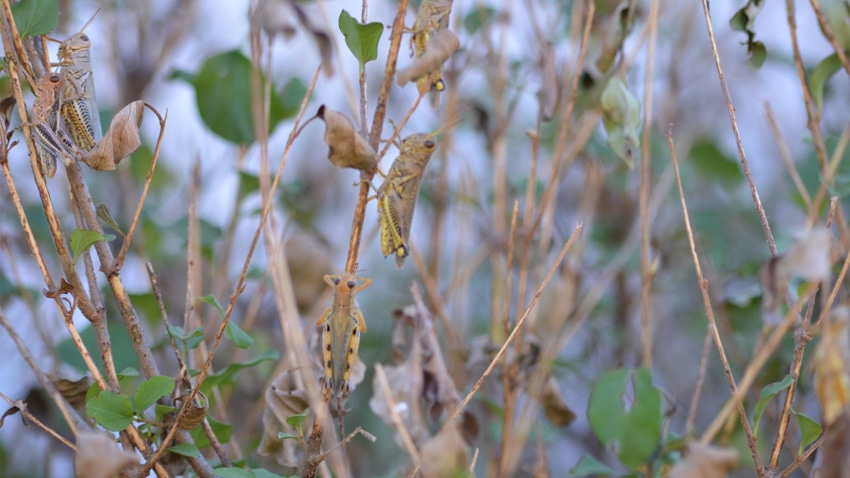July 11, 2023

by Samantha Daniel
Last year’s drought conditions and results from adult grasshopper surveys indicated the potential for grasshopper outbreaks this year. However, precipitation and temperature can affect the severity of outbreaks. Keeping an eye on fields this summer can help mitigate economic loss from grasshopper feeding.
Because grasshoppers tend to thrive in dry, hot conditions — while outbreaks can be severely limited by cool, wet spring weather — producers in drought-stricken eastern Nebraska might see an increase in outbreaks this summer, while western Nebraska grasshopper populations may be reduced. It is still recommended that producers throughout the state scout their fields and select proper treatment protocols when needed.
Threshold numbers
One of the best ways to scout for grasshoppers is to use the square-foot method. Randomly select an area several feet away and visualize a 1-square-foot area around that spot. Walk toward this spot and count the number of grasshoppers you see in or jumping out of this area.
Repeat this procedure 18 times and divide the total number of grasshoppers by two. This will give you the number of grasshoppers per square yard. Economic thresholds for grasshoppers range from eight to 40 grasshoppers per square yard, depending on a variety of factors. Keep in mind that control is easiest before grasshoppers reach the adult stage.
Grasshoppers may be controlled by applying insecticides as sprays or baits. The insecticides currently registered for use on rangeland are dimilin, malathion and carbaryl.
Rates for these products are listed on the labels. If larger grasshoppers are targeted, the higher-labeled rates should be used. Other insecticides are labeled for control of grasshoppers in forages, grasses, alfalfa and other crops.
Daniel is a Nebraska Extension water and cropping systems educator.
Source: UNL Forage Minute
You May Also Like




